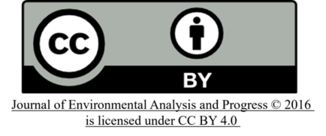Qualitative analysis of the behavior of the seedlings of sugarcane of different varieties using the method of temporary immersion
DOI:
https://doi.org/10.24221/jeap.3.1.2018.1700.049-054Palavras-chave:
Bioreactor, micro-propagation, multiplication, Bio-factory, productionResumo
Sugar cane is a culture of great importance worldwide due to the fact it is the raw material needed for the production of sugar, ethanol, and biomass, among other products. The micro-propagation of seedlings in a lab generates superior production when compared to the conventional process of propagation in the field. Therefore, it is seen as an alternative to produce healthy seedlings that present the same genetic load of the matrices. A disadvantage of micro-propagation is the high cost of workforce used in the process. The System of Temporary Immersion (SIT) was createdwith the goal of solving this issue. At the bio-factory Governador Miguel Arraes of the Center of Strategic Technology of the Northeast (CETENE), this system consists of 2 PET bottles of 5L (Bioreactors – BITs), a group of hoses and two Millipore filters of 0.22µm as well as automated controllers. Within the BITs it is possible to multiply a higher quantity of plants decreasing, this way, the time within the lab. Theobjective of this study is the qualitative analysis of the behavior of the System of Temporary Immersion using seedlings of different varieties of sugar cane. The methodology consisted of transferring the content of 1 or 3 pots, depending on the test, to the bioreactor with 200ml and 500ml of culture mean respectively. The varieties used were RB 86 3129 and B 8008 because there are fewer studies about them and of great interest to the Bio-factory. The variety RB 86 3129, on the first pricking, presented a better response than the B 8008, and days later the majority presented loss through contamination.Downloads
Referências
MELO, A. DE S.; SAMPAIO, Y.S. Barreto. 2016. Uma Nota Sobre o Impacto do Preço do Açúcar, do Etanol e da Gasolina na Produção do Setor Sucroalcooleiro. Revista Brasileira de Economia, v. 70, n. 1, p. 61-69.
COMPANHIA NACIONAL DE ABASTECIMENTO. 2017. Indicadores da Agropecuária, ano XXVI, n. 9, p.01-120.
COMPANHIA NACIONAL DE ABASTECIMENTO. 2017. Acompanhamento da safra brasileira de cana de açúcar. V.3, safra 2016/2017, n.4, p. 01-82.
RIBEIRO, J. M.; BASTOS, D. C. 2008.Biorreatores: aspectos gerais e sua utilização para cultura de tecidos vegetais. Embrapa Semiárido-Documentos (INFOTECA-E).
JUNGHANS, T. G.; SOUZA, A. DA S. 2013. Aspectos práticos da micropropagação de plantas. Embrapa Mandioca e Fruticultura Tropical, Segunda Edição.
COSTA, Deivid Almeida da et al. 2012. Aspectos fisiológicos da cana-de-açúcar sob o cultivo in vitro em diferentes microambientes. Tese de Doutorado. Universidade Federal Rural de Pernambuco. Recife, Pernambuco, Brasil. 82p.
MEDEIROS, Emmanuel Cabral de.2011. Aspectos bioquímicos e fisiológicos da palma forrageira OpuntiastrictaHawsob distintos sistemas de cultivo in vitro. Dissertação de mestrado. Universidade Federal Rural de Pernambuco. Recife, Pernambuco, Brasil. 24 p.
AGÊNCIA EMBRAPA DE INFORMAÇÃO TECNOLÓGICA. Embrapa. Disponível em: http://www.agencia.cnptia.embrapa.br/gestor/cana-de-acucar/arvore/CONTAG01_59_22122006154840.html [acesso em 25 de outubro, 2017].
ESTATÍSTICAS E DADOS BÁSICOS DE ECONOMIA AGRÍCOLA. Ministério da Agricultura, Pecuária e Abastecimento. Disponível em: http://www.agricultura.gov.br/assuntos/politica-agricola/todas-publicacoes-de-politica-agricola/estatisticas-e-dados-basicos-de-economia-agricola/pasta-de-julho-2017.pdf/view [acesso em 10 de outubro, 2017].
PRODUÇÃO DE CANA DE AÇÚCAR NO BRASIL (E NO MUNDO). Nova Cana. Disponível em: https://www.novacana.com/cana-de-acucar/producao-cana-de-acucar-brasil-e-mundo/#producao-pelo-mundo [acesso em 25 de setembro, 2017].
SAFRA 2017/2018 DE CANA-DE-AÇÚCAR. Governo do Brasil. Disponível em: http://www.brasil.gov.br/economia-e-emprego/2017/04/safra-2017-2018-de-cana-de-acucar-deve-ser-de-647-milhoes-de-toneladas [acesso em 23 de outubro, 2017].
COSTA, D. A. 2013. BIORREATORES DE IMERSÃO TEMPORÁRIA: MANIPULAÇÃO E FUNCIONAMENTO. Disponível em: “https://pt.scribd.com/doc/68059888/biorreatores-na-micropropagacao-de-plantas”[acesso em: 07 de outubro, 2017].
DONINI, L. P.; MAYER, K. C. de A.; ZACARIAS, F. M.; SILVA, N. D. G. da.; VITÓRIA, J. M.; SILVA, S. D. dos A. e; DUTRA, L. F.Produção de mudas de cana de açúcar (saccharumofficinarum l.) Micropropagadas. 2012. Simpósio Estadual de Agroenergia, Porto Alegre, RS, Brasil, EMBRAPA.
Downloads
Publicado
Como Citar
Edição
Seção
Licença
Material protegido por direitos autorais e plágio. No caso de material com direitos autorais ser reproduzido no manuscrito, a atribuição integral deve ser informada no texto; um documento comprobatório de autorização deve ser enviado para a Comissão Editorial como documento suplementar. É da responsabilidade dos autores, não do JEAP ou dos editores ou revisores, informar, no artigo, a autoria de textos, dados, figuras, imagens e/ou mapas publicados anteriormente em outro lugar. Se existir alguma suspeita sobre a originalidade do material, a Comissão Editorial pode verificar o manuscrito por plágio. Nos casos em que trechos já publicados em outro documento for confirmado, o manuscrito será devolvido sem revisão adicional e sem a possibilidade de nova submissão. Autoplágio (ou seja, o uso de frases idênticas de documentos publicados anteriormente pelo mesmo autor) também não é aceitável.
Direitos autorais: Autor
Material protected by copyright and plagiarism rights. In the case of copyrighted material being reproduced in a manuscript, full attribution should be informed in the text; an authorization document is proving to be sent to the Editorial Board as a supplementary document. It is the responsibility of the authors, not JEAP or editors or reviewers, to inform, in the article, the authors of texts, data, graphics, images and maps previously published elsewhere. If there is any suspicion about the originality of the material, the Editorial Board can check the manuscript for plagiarism. Where plagiarism is confirmed, the document will be returned without further review and the possibility of a new submission. Self-plagiarism (i.e., the use of the same phrases previously published documents by any of the authors) is not acceptable.
Copyright: Author






